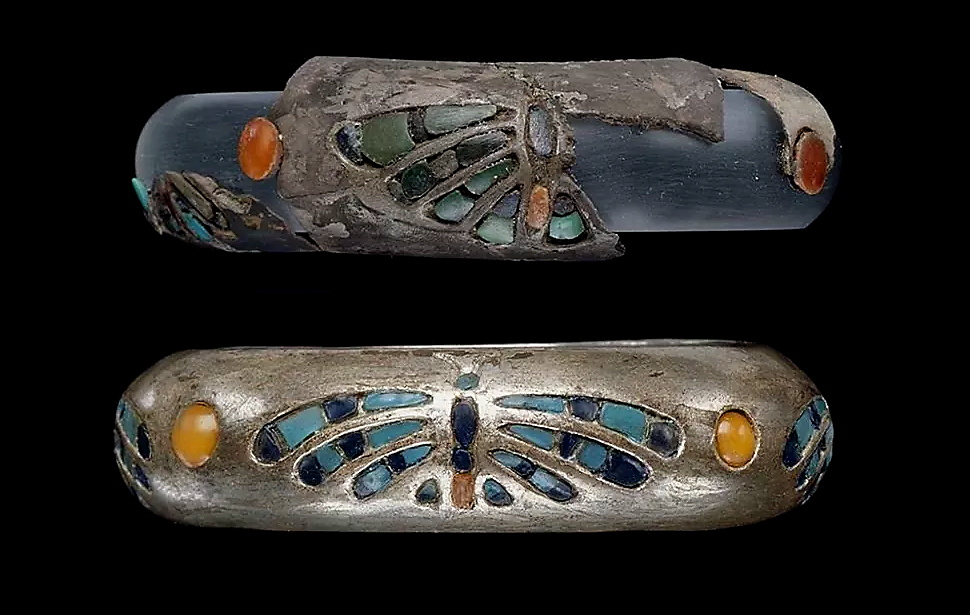Ancient Egyptian Queen's Bracelets Evidence of Trade Between Egypt and Greece

Bracelets belonging to an ancient Egyptian queen constitute the first evidence of inter-city trade between Egypt and Greece, according to Livescience. A new analysis of the ancient Egyptian jewellery shows that the silver used in the queen's bracelets originated from Greece, shedding light on the trade networks of the Old Kingdom.
Upon analysing jewellery samples, an international team of archaeologists found that the bracelets contained copper, gold, and lead. Incrustations with semi-precious gemstones like turquoise, lapis lazuli, and carnelian, common features in ancient Egyptian adornments, were also present, as per the statement.
However, some of the jewellery pieces, including one with a butterfly motif, also contained traces of silver, despite no known local sources of the precious metal in ancient Egypt around 2600 BC when the pieces were crafted.
The archaeologists studied isotope ratios and established that the jewellery materials originate from a group of Greek islands in the Aegean Sea and also from Laurion, a town in southern Greece.
The study was published in the Journal of Archaeological Science: Reports. "The origin of the silver that was used for [artefacts] during the third millennium has remained a mystery," said leading author Karin Sowada, lecturer in the Department of History and Archaeology at Macquarie University in Sydney. "This new find for the first time demonstrates the potential geographic reach of the trade networks used by the Egyptian state during the early Old Kingdom at the height of the pyramid-building era."
It's quite possible that the silver came via the port of Byblos in modern-day Lebanon, suggest the researchers. They noted that the tombs of Byblos from the late fourth millennium contained numerous silver objects, and there was activity between this port and Egypt at the time. The silver on the bracelets is the first evidence of inter-city exchange between Egypt and Greece, they added.
"The bracelets were crafted using a cold metalworking method with frequent annealing [a heating process] to prevent cracking," said co-author of the study Damian Gore, professor at the School of Natural Sciences at Macquarie University.
The bracelets were also likely alloyed with gold to enhance their appearance and malleability during production.
The queen to whom the jewellery belonged, Hetepheres I, was one of the most influential queens of ancient Egypt and the wife of Sneferu, the first pharaoh of the Fourth Dynasty (approximately 2575 BC to 2465 BC). Her tomb, discovered in Giza in 1925, held many treasures, such as gilded furniture, gold vessels, and jewellery, including 20 such bracelets, the researchers report